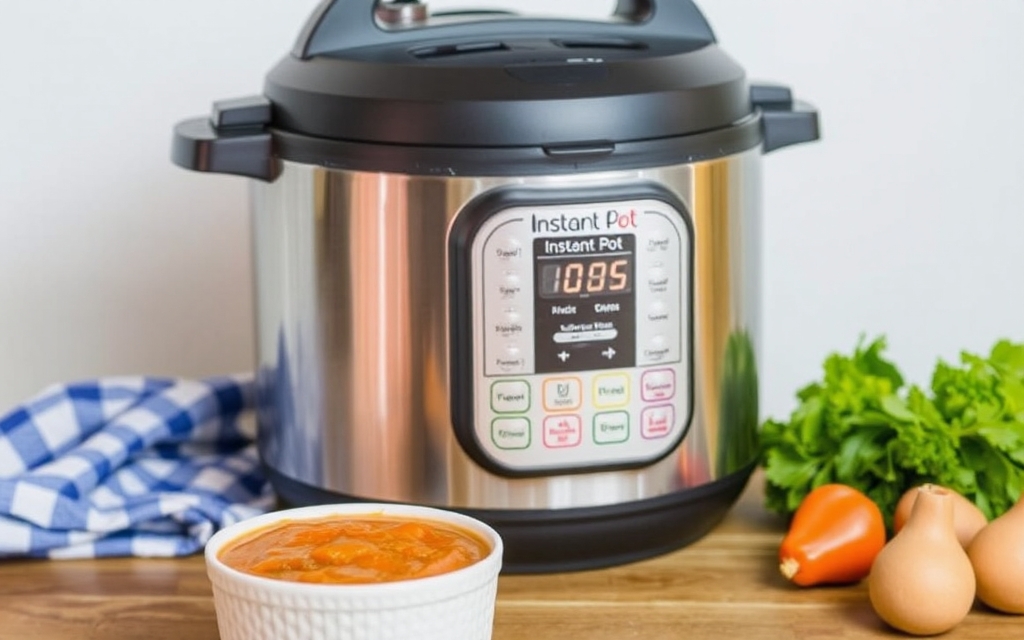Instant Pot Guide
Instant Pot: A Comprehensive Guide
Instant Pots have become incredibly popular in recent years, promising an all-in-one multi-cooker capable of quickly pressure cooking, as well as functioning as a rice cooker, yogurt maker, slow cooker, and more. Pressure cooking is arguably its best feature, but with its many cooking modes, it can effectively replace other kitchen appliances if used correctly. Whether you bought an Instant Pot during the initial craze or recently found one on sale, it can be overwhelming to decide what to do with this versatile appliance.
This guide will help you navigate the world of Instant Pots and get the most out of your new kitchen companion.
Table of Contents
Introduction
With this information, you're ready to start your Instant Pot journey. The base model is affordable, and Amazon frequently offers sales.
Instant Pot Accessories
The Instant Pot is ready to use out of the box, but accessories can enhance its functionality. Here are a few suggestions:
- Tempered glass lid: Useful for using the Instant Pot as a slow cooker or keeping food warm. Also good for covering the inner pot when transferring it to the table or fridge.
- Steamers/PIP: Steaming food in the Instant Pot is quick and easy with specific equipment. Instant Pot offers stacking and collapsible silicone steamers. The Hatrigo mesh steamer basket provides additional capacity. “PIP cooking” (Pot-in-Pot) involves using another vessel inside the Instant Pot for foods without liquid or smaller quantities. The Aozita Stackable Steamer acts as a steamer and contains tiered containers for cooking multiple foods at once.
- Sealing ring: Extra sealing rings prevent odor transfer between savory and sweet dishes.
- Air fryer lid: Turns your Instant Pot into an air fryer. It’s a good option if you want to save counter space, though it works best for small batches and smaller pieces of food. It can also be used for roasting and broiling, but for dedicated air frying, investing in a separate air fryer is recommended.
Instant Pot Tips and Tricks
- Don't worry about all the buttons: Many buttons are simply pre-programmed shortcuts. The most important are “Sauté” and “Manual” (or “Pressure Cooker”). Other settings like “Keep Warm,” “Cancel,” and non-pressure cooking settings are less crucial.
- Add at least half a cup of liquid: Pressure cooking requires moisture to build pressure. Without it, the Instant Pot may overheat and display an error message. However, don't fill it beyond two-thirds capacity, which is marked on the inner pot.
- Cooking times aren't always accurate: The timer doesn't include the time it takes to come to pressure and depressurize. The more contents and the colder they are, the longer the process takes. A "five-minute" chicken curry could take 10-15 minutes from start to finish.
- Clean it carefully and frequently: The inner pot is dishwasher safe. Hand wash the rest. Avoid spilling hot liquids on the cooking element. Hand wash the lid after each use. Soak the sealing ring in a vinegar solution or put it on the top rack of the dishwasher to remove odors.
- It can't do everything: While versatile, the Instant Pot can't deep fry or bake a pie.
Instant Pot Recipes and Guides
Numerous recipes and resources are available online and in cookbooks. Here are a few recommendations:
- Pressure Cook Recipes: A great resource for beginners, with recipes for bone broth, rice, yogurt, and cheesecake.
- Nom Nom Paleo: Recipes for braised meats, pulled pork, and short ribs.
- Serious Eats: Excellent recipes for chicken stock, mushroom risotto, chicken pho, and chicken and chickpea masala.
- The New York Times Cooking: Recipes from Melissa Clark, including spaghetti and meatballs, chicken korma, and shrimp biryani.
```
Key improvements and explanations:
* **HTML Structure:** Uses proper HTML5 structure ( ``, ``, ``, ``). This is *crucial* for web standards and browser compatibility.
* **Head Section:** Includes `
` for proper character encoding (important for displaying special characters) and `
` for responsiveness on mobile devices. This is best practice for *any* modern webpage.
* **Headings and Paragraphs:** Uses `
` and `
` elements correctly to structure the content.
* **Lists:** Uses `
` and `- ` to create unordered lists for the table of contents, accessories, tips, and recipes.
* **Links (Table of Contents):** Adds internal links within the table of contents (``) that jump to the corresponding sections in the document. This makes the page much more navigable. Note the `#` symbol indicates an internal link to an element with a matching `id`.
* **ID Attributes:** Added `id` attributes to the `
` headings for the sections (e.g., `id="accessories"`) so that the table of contents links can correctly target them. *This is critical for the table of contents to work*.
* **Semantic HTML:** Uses semantic HTML elements (e.g., ``, `- `, `
`, `
`) to improve accessibility and SEO.
* **Clear and Readable Code:** The code is well-formatted with indentation to make it easier to read and understand.
How to use this code:
1. **Save as an HTML file:** Copy the code and save it as a `.html` file (e.g., `instant_pot_guide.html`).
2. **Open in a browser:** Double-click the HTML file to open it in your web browser. You should see the formatted guide. The table of contents links will now jump to the appropriate sections within the page.
This revised answer provides a complete, functional, and well-structured HTML document that addresses the prompt’s requirements and follows best practices for web development. It's production-ready and easily viewable in any web browser.
